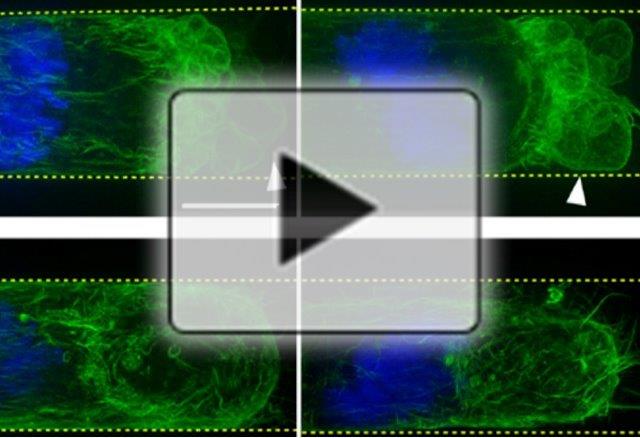FOR IMMEDIATE RELEASE
ACS News Service Weekly PressPac: June 29, 2016
How cancer cells spread and squeeze through tiny blood vessels (video)
"Molecular Insights into Division of Single Human Cancer Cells in On-Chip Transparent Microtubes"
ACS Nano
The spread of cancer from a tumor’s original location to other parts of the body can play a major role in whether the disease turns deadly. Many steps in this process, called metastasis, remain murky. But now scientists are gaining new insights into how cancer cells might squeeze through and even divide within narrow blood vessels while travelling in the body. They report their study using microtubular nanomembranes in the journal ACS Nano.
One thing scientists do know about metastasis is that spreading cancer cells elongate to fit through capillaries — blood vessels as fine as spider silk. They can get trapped in these skinny passages, but despite becoming misshapen, they seem to still be able to divide and form little colonies of cells before dislodging and moving on. If scientists could better understand this process, they could potentially improve anti-metastatic treatment strategies. But studying it in molecular detail is not possible with conventional analytical techniques. So Wang Xi, Christine K. Schmidt and colleagues used transparent, rolled-up nanofilms to study how cancer cells divide in capillaries.
The researchers trapped live cancer cells in the tubular membranes and, with optical high- and super-resolution microscopy, could see how the cells adapted to the confined environment. Cell structures significantly changed in the nanomembranes, but it appeared that membrane blebbing — the formation of bulges — at the cells’ tips helped keep genetic material stable, an important requirement for healthy cell division. The researchers say their technique could be a useful tool for further investigating metastatic cancer.
The authors acknowledge funding from the European Research Council, the Volkswagen Foundation, the German Research Foundation (DFG), the Federation of European Biochemical Societies, the Wellcome Trust, the Alexander von Humboldt Foundation, the U.S. National Science Foundation and Cancer Research U.K.
Watch the Headline Science video.
Watch Video


